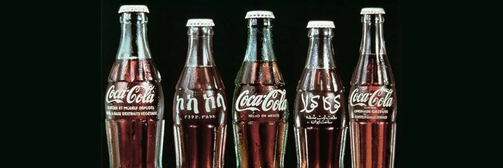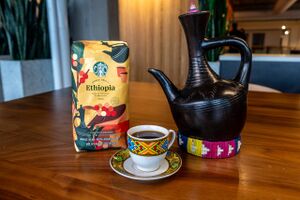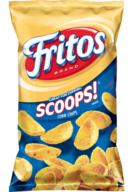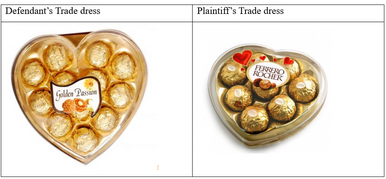Trade dress
What is ''Trade Dress''
The term "Trade Dress" is said to have originated from the US Lanham Act[1] while describing how commercial products or their packaging designs communicate product origin to consumers. Trademark law includes Trade dress as an aspect under its protection framework, which serves as Intellectual property protection law[2]. The Trademark law protects unique visual elements created from design characteristics together with design, shape, color, and texture combinations[3]. The purchasing behaviour of the consumers is not only affected by the names of brand that appear on products, but also by the overall packaging designs and visual impression of the product. This principle goes beyond the packaging to the very product configuration as well as long as they are used to signify the 'goods' and 'services' origin[4].
Official Definition
Black's Law Dictionary defines trade dress as the "visual impression that is made by the totality of all elements used to package or present a service or good for sale, giving it a recognizable look."[5] Section 43(a) of the Lanham Act of 1946 enables unregistered trade dress protection through the U.S. legal system based on source-identifying functions[6]. Unregistered and registered trade dress can receive protection given that it demonstrates distinctive qualities along with not functioning as a product[7]. To protect their trade dress the affected party needs to show two key elements: non-functional status and distinctive features gained from proper use[8].
Elements of Trade Dress
Trade dress refers to the visualization and feel of a product, its packaging, and the environment in which a service is provided. It is an aspect of intellectual property under trademark law, that is designed to help consumers identify the source of a product or service. Trade dress law recognizes the following elements of trade dress:
Product Design
Product shape and design represent the component for protection[9]. The protection exists to stop competitors from duplicating distinctive product designs, which would create confusion regarding product source[6]. Protecting functions to safeguard the distinctive semblance of Coca-Cola bottles through trade dress classification[10]. The requirements for seeking protection include designs that remain distinct while avoiding functionality since essential elements or price-increasing elements cannot be included[11].

Product Packaging
The design elements in addition to color choices and graphical aspects and the overall look of product packaging determine its identity. The Tiffany & Co blue box serves as an illustration of a trademarked package design. A package has to carry special markings and features that will identify its origin while surpassing its basic practical needs.

Store Design and Décor
This pertains to the overall layout and Décor of a store or service establishment. For example, Frito-Lay's tortilla bowl chip shape is protected as trade dress. The configuration must not be functional and should create a distinctive impression in consumers' minds.

Product Configuration
Product configuration refers to the specific arrangement or structure of a product. For example, Frito Lay's tortilla bowl chip shape is protected as trade dress. The configuration must not be functional and should create a distinctive impression in consumers' minds.

Color and Texture
Strategic brand-associated colors and textures qualify as trade dress when they achieve sufficient notoriety, establishing the product source while distinguishing it against market rivals.
For example:
Tiffany Blue (color)
Christian Louboutin's red soles on shoes (color).

The color or texture must not serve a functional purpose.
Trade Dress in Official Databases: Appearance and Invocation
Trade dress plays an important role in trademark law, which protects trade dress elements which enable customers to recognize their preferred products by visual appearance. This concept is invoked in official databases primarily through registration processes and legal documentation related to intellectual property.
Invocation in Official Databases
Important information related to trade dress stands in official databases where it accompanies registered trademarks and legal documents and case law documents. Relevant intellectual property offices accept trade dress registration in both India and the United States. The information typically includes:
- Description of the Trade Dress
- Registration Status
- Associated Goods/Services
Trade dress typically occurs in the context of intellectual property litigation and trademark registration. Courts and intellectual property offices handle trade dress cases, and these records are accessible through legal and governmental databases.[12]
Trade dress is documented in the following ways within official databases:
- Trademark Registrations: Trade dress claims are included in trademark filings with government agencies.[13]
- Court Rulings: Judicial decisions involving trade dress disputes are available in case law databases.[14]
- Legal Filings and Pleadings: Trade dress issues are often cited in complaints, answers, and motions.
- IP Office Reports: Intellectual property agencies periodically publish reports and guidelines that cover trade dress.
Relevant Departments and Data Creators
The apex departments and agencies involved in trade dress registration, litigation, and enforcement include:
| Agency/Department | Jurisdiction | Role | Official Database |
|---|---|---|---|
| Controller General of Patents, Designs, and Trademarks (CGPDTM) | India | Trademark registration, including trade dress | https://ipindiaonline.gov.in/ |
| United States Patent and Trademark Office (USPTO) | USA | Trade dress registration as a form of trademark | https://www.uspto.gov/ |
| World Intellectual Property Organization (WIPO) | International | International trade dress claims through the Madrid System | https://www.wipo.int/portal/en/index.html |
| Indian Courts (Supreme Court, High Courts, District Courts) | India | Judicial decisions on trade dress disputes | https://www.sci.gov.in/(Supreme court)
https://ecourts.gov.in/ecourts_home/(District and High courts) |
| Trademark Trial and Appeal Board (TTAB) | USA | Handles trade dress registration disputes | https://www.uspto.gov/trademarks/ttab |
How "Trade Dress" can be protected?
Trade Dress protection in India
In India there is no specific definition for Trade dress under Trademark Act 1999. But due to the development of in Intellectual property laws, a new amendment recognised Trade dress protection under the definition of "trademark" in Section 2(1)(zb)[15], which included shape, color combination, packaging and overall appearance. Trade dress receives protection by common law through passing off doctrine because it safeguards customers against confusing branding and product labeling.[16]
(i) Prepare an Application:- Submit an application to the Controller General of Patents Designs and Trademarks (CGPDTM) containing complete information about trade dress elements of shape, color and texture and packaging specification. The submission should contain supporting evidence which includes documentation of sales performance and advertising materials as well as customer identification of the unique brand identity. The application must identify the specific Nice Classification group that applies to the goods or services.
(ii) Submit the Apllication:-
- File the application electronically via the IP India portal: https://ipindia.gov.in/
- Pay the prescribed fee (based on the number of classes and type of applicant).
(iii) Examination:- The CGPDTM will assess the application to determine the distinctiveness of the trade dress, check for any conflicts with existing trademarks or trade dress, and ensure that the design is not functional, as functional designs cannot be protected.
(iv) Publication and Opposition:- If approved, the trade dress is published in the Trade marks journal for 4 months. If no opposition is filled, it proceeds to registration.
(v) Certificate of Registration:- Once registered, the trade dress is protected for 10 years (renewable indefinitely).
(vi) Civil Remedies:-[17]
- Injuction
- Damages
- Seizure
(vii) Criminal Remedies:- Section 103 and 104 of the Trade Marks Act - Punishment of up to 3 years of imprisonment and a fine of up to ₹2,00,000.
Trade Dress protection in US
Trade dress in US, is protected under Section 43(a) of the Lanham Act of 1946 (15 U.S.C. § 1125(a)) and common law principles of unfair competition. The Lanham Act protects the visual appearance or packaging design of a product that prevents consumer confusion and protects the business from imitation and unfair market practices.[6][3][18]
(i) Protection:-
- An application needs to filed with the United States Patent and Trademark Office (USPTO) under the Lanham Act.
- Trade dress must be distinctive enough that consumer associate it with a specific source.
- Trade dress must be non-functional (cannot be essential to the use of the product).
- Trade dress must be unique and immediately identifiable (e.g Toblerone chocolate's triangle shape).
- Consumer association of the trade dress with a particular source over time (e.g Louboutin's red sole).
(ii) Judicial Precedents:-
The US Supreme court have establisted two important principles in Trade dress law under the Lanham Act, emphasizing inherent distinctiveness and proof of secondary meaning.
- Two Pesos, Inc. v. Taco Cabana, Inc., 505 U.S. 763 (1992)The case emphasized the inherent distinctiveness of trade dress without proof of secondary meaning. Due to this development business should discover better defense for their exclusive packaing along with design aspects which creates a more comprehensive business landscape.
- Wal-Mart Stores, Inc. v. Samara Bros., Inc., 529 U.S. 205 (2000)The landmark case emphasized that trade dress should have the proof of secondary meaning. onsumer recognition stands as a vital factor for particular designs to impact branding strategies at companies.
(iii) Duration and Renewal:-
- Protection lasts for 10 years from the date of registration and can be renewd indefinitly evry 10 years
Key Case Laws and Principles
United States Jurisprudence[19]
Lanham Act: A trade dress can receive protection under the Lanham Act through Section 43(a) if it fulfills the requirements of distinctiveness and non-functionality regardless of its registration status. Showcasing their trade dress design and its distinctiveness acquired through usage as well as proving its non - functionality will enable the affected party to obtain legal protection.
Wal-Mart stores v. Samara Bros (2000):
Facts: Samara Bros. brought a lawsuit against Walmart Stores (2000) when the retail giant allegedly copied designer children's clothing items before selling them for less money. Samara filed Lanham Act trade dress infringement claims against Walmart due to their imitation clothing designs that confused customers into thinking they acquired Samara's original products. At first the Second Circuit sided with Samara by establishing that their designs automatically qualified for protection given their distinctiveness from the start. The U.S. Supreme Court overturned the original court decision.
Issue: A legal determination needed to be made about whether product design in its trade dress category could obtain trademark protection through the Lanham Act independently of demonstrating secondary meaning recognition. Does a company require proof that consumers link particular product designs to single brands to obtain trade dress protection?
Law: The Supreme Court evaluated Section 43(a) within the Lanham Act to understand its defense against unregistered trademarks and trade dress items. Prior cases Two Pesos, Inc. v. Taco Cabana, Inc., 505 U.S. 763 (1992), courts confirmed that inherently distinctive trade dress elements, which include packaging, can achieve protection before acquiring established market recognition.[20] The Supreme Court had not confirmed whether distinctive product designs without package designs could establish inherent distinctiveness.
Application: The Court established a distinction between packaging functionality and product appearance because the first type could maintain protectability while the latter could not. It ruled that:
- Product designs fail to meet the distinctive criteria because customers have no automatic link between items and specific brand names.
- A product design cannot gain trade dress protection unless it develops secondary meaning through consumer recognition of its manufacturer origin.
- Because Samara Bros. did not demonstrate that its clothing designs acquired secondary meaning trademark law did not restrict Walmart from using similar designs.
Conclusion: A unanimous Supreme Court decided with Walmart that product designs should not gain protection without demonstrating secondary meaning since designs lack inherent distinctiveness. The Supreme Court decision defined trademark law boundaries which created greater difficulty for companies to defend their exclusive ownership of product designs unless they could provide evidence of clear consumer awareness. Distinctiveness stands by itself as an insufficient factor because brand association needs clear demonstration for trade dress protection.
Two Pesos, Inc. v. Taco Cabana, Inc., 505 U.S. 763 (1992)
Facts: In 1992 Taco Cabana filed a trade dress infringement claim against Two Pesos through the Lanham Act because of alleged design theft. The distinctive brightness and patio design of Taco Cabana built a unique appearance that Two Pesos allegedly duplicated according to the restaurant chain. After a jury trial Taco Cabana succeeded when it proved its trade dress held unique distinctiveness that received legal protection. Two Pesos filed an appeal which stated that trade dress demands proof of distinctive qualities through consumer recognition known as secondary meaning.
Issues: The primary legal dispute centered on the protection status of trade dress expressions under the Lanham Act 43(a) because they had an inherent distinctiveness component or if secondary meaning evidence was required.
Law: An unregistered trademark and trade dress can obtain protection under Section 43(a) of the Lanham Act as long as it demonstrates distinctive qualities either by nature or through acquired usability. Courts remained divided concerning the necessity of proving secondary meaning for trade dress protection until this particular case resolved the dispute.
Application: Supreme Court judges upheld the protection of trade dress with inherent qualities that did not depend on gaining secondary meaning for legal recognition. The Supreme Court explained that trade dress protection functions similarly to word marks with either automatic protection as fanciful or arbitrary signs or needing secondary meaning for descriptive ones. The distinctive nature of Taco Cabana’s restaurant décor secured protection because it fulfilled the criteria for non-functional design and unique styling.
Conclusion: Two Pesos received condemnation from the Court after the jury confirmed Taco Cabana's trade dress infringement verdict. Through this decision businesses gained new trade dress protection which enables them to seek legal action against copied designs automatically when their distinctive designs are inherently distinctive. This court ruling elevated brand identity regulations and its court precedent generated effects on subsequent legal decisions regarding product packaging together with store set-ups and visual branding standards.
Indian Jurisprudence
M/s M.L. Brothers LLP v. Uma Impact Private Limited (2023): The Delhi High Court defined all fundamental components required for passing off cases through three fundamnetal requirements which include goodwill/reputation and defenfant misrepresentation leading to permant loss for pliantiff. Becase the plaintiff failed to present sufficient proof that each specified product violated their rights the court decided not to issue an injunction.

Ferrero Rocher Case: The Delhi High Court issued a key decision by validating Ferrero Rocher's distintive brand packaging design as well-known which resulted in granting the company an injunction against packaing duplication from its competitor. Consumer confusion emerged as a critical element for the court which led to monetary compensation given to the plaintiff in addition to the infringment determination.[22]
Colgate Palmolive and Company Vs. Anchor Health ad Beauty, 2003: In this case, the dispute was regarding the combination of colour - red and white. The court held that if the the colour of both the products would be same then it will create confusion in the Minds of the consumer with regards to the origin of the product. If an illiterate consumer uses another product based on the physical appearance of the product then it amounts to passing off.
Cadbury India Limited Vs. Neeraj Food Products, 2007: In this case, there was a dispute in the name of JAMES BOND ehich was similar to GEMS of the cadbury. The court held that the word JAMES BOND is physically similar to the registered trademark GEMS of Cadbury. The high Court further held that the packing of Neeraj Foods is also similar to the Cadbury. So Neeraj Foods are restrained from using such packing because it was similar to Cadbury.
The Nice Classification (NCL)
International Classifications of Goods and Services, also Known as the Nice Classification was established by The Nice Agreement (1957), is a system of classifying goods and servies for the purpose of registering trademarks. The system receives updates every five years and its current incarnation is the eleventh version that organizes merchandise into 45 classes where goods fall within classes 1 through 34 and services are covered by classes 35 through 45. Users can select appropriate classes when registering trademarks. International trademark applications become more efficient because the system finds recognition in numerous countries worldwide.[23] The World Intellectual Property Organization (WIPO) serves as the authority that determines the classification system.
| Class Index | Nice International Classification of Goods and Services | |
|---|---|---|
| GOODS | 1 | Class 1 includes primarily industrial chemicals along with scientific materials and agricultural substances that also support the production of goods from other classifications. |
| 2 | Class 2 includes primarily of paints, colorants together with corrosion protection preparations. | |
| 3 | Class 3 includes mainly non-medicated toiletry preparations, as well as cleaning preparations for use in the home and other environments. | |
| 4 | Class 4 includes mainly industrial oils and greases, fuels and illuminants. | |
| 5 | Class 5 primarily contains pharmaceuticals alongside medical and veterinary preparations. | |
| 6 | Class 6 contains both pure and partially processed basic metals together with alloys. | |
| 7 | Class 7 includes mainly machines and machine tools, motors and engines. | |
| 8 | Class 8 includes mainly hand-operated tools and implements for performing tasks, such as drilling, shaping, cutting and piercing. | |
| 9 | The Class 9 includes scientific research devices together with safety equipment and audiovisual instrumentation and information technology tools. | |
| 10 | Class 10 consists of surgical medical dental and veterinary apparatus instruments as well as articles that primarily help diagnose and treat humans and animals for functional and health improvements. | |
| 11 | Class 11 includes mainly environmental control apparatus and installations, in particular, for the purposes of lighting, cooking, cooling and sanitizing. | |
| 12 | Class 12 includes mainly vehicles and apparatus for the transport of people or goods by land, air or water. | |
| 13 | Class 13 mainly includes firearms and pyrotechnic products. | |
| 14 | Class 14 includes precious metals alongside goods of precious metals or their metals-based coatings together with jewelry and clocks and watches with their component parts. | |
| 15 | The class 15 group consists primarily of musical instruments alongside all their components as well as their accessory items. | |
| 16 | Class 16 includes paper items alongside cardboard goods and specific materials derived from these two main constituents along with official stationery products. | |
| 17 | Class 17 includes electrical, thermal and acoustic insulating materials and plastics used in manufacturing operations through sheets, blocks and rods and certain items made from rubber, gutta-percha, gum, asbestos, mica or their substitute materials. | |
| 18 | Class 18 includes leather and imitations of leather while including particular goods which originate from these materials. | |
| 19 | Class 19 includes building and construction materials that are not metallic in nature. | |
| 20 | Class 20 includes furniture types alongside their components with additional categories including wooden goods besides such materials as cork and cane, together with wickerwork and horn along with bone and whalebone and shell and amber and mother-of-pearl and meerschaum and their derivatives or plastic components. | |
| 21 | Class 21 includes mainly small hand-operated household and kitchen utensils together with cosmetic tools and glassware and several products from porcelain, ceramic, earthenware, terra-cotta, and glass materials. | |
| 22 | Class 22 consists of canvas together with other materials to produce sails as well as string and materials for padding and stuffing and untanned textile materials. | |
| 23 | Class 23 includes mainly natural or synthetic yarns and threads for textile use. | |
| 24 | Class 24 includes mainly fabrics and fabric covers for household use. | |
| 25 | Class 25 includes mainly clothing, footwear and headwear for human beings. | |
| 26 | Class 26 includes mainly dressmakers' articles, natural or synthetic hair for wear, and hair adornments, as well as small decorative items intended to adorn a variety of objects, not included in other classes. | |
| 27 | Class 27 includes mainly products intended to be added as coverings to previously constructed floors and walls. | |
| 28 | Class 28 includes mainly toys, apparatus for playing games, sports equipment, amusement and novelty items, as well as certain articles for Christmas trees. | |
| 29 | Class 29 includes mainly foodstuffs of animal origin, as well as vegetables and other horticultural comestible products which are prepared or preserved for consumption. | |
| 30 | Class 30 includes mainly foodstuffs of plant origin, except fruits and vegetables, prepared or preserved for consumption, as well as auxiliaries intended for the improvement of the flavor of food. | |
| 31 | Class 31 includes mainly land and sea products not having been subjected to any form of preparation for consumption, live animals and plants, as well as foodstuffs for animals. | |
| 32 | Class 32 includes mainly non-alcoholic beverages, as well as beer. | |
| 33 | Class 33 includes mainly alcoholic beverages, essences and extracts. | |
| 34 | Class 34 includes mainly tobacco and articles used for smoking, as well as certain accessories and containers related to their use. | |
| SERVICES | 35 | Class 35 includes mainly services involving business management, operation, organization and administration of a commercial or industrial enterprise, as well as advertising, marketing and promotional services. For the purposes of classification, the sale of goods is not considered to be a service. |
| 36 | Class 36 includes mainly services relating to banking and other financial transactions, financial valuation services, as well as insurance and real estate activities. | |
| 37 | Class 37 includes mainly services in the field of construction, as well as services involving the restoration of objects to their original condition or their preservation without altering their physical or chemical properties. | |
| 38 | Class 38 includes mainly services that allow at least one party to communicate with another, as well as services for the broadcasting and transmission of data. | |
| 39 | Class 39 includes mainly services for the transport of people, animals or goods from one place to another by rail, road, water, air or pipeline and services necessarily connected with such transport, as well as the storing of goods in any kind of storage facility, warehouses or other types of building for their preservation or guarding. | |
| 40 | Class 40 includes mainly services rendered by the mechanical or chemical processing, transformation or production of objects or inorganic or organic substances, including custom manufacturing services. For the purposes of classification, the production or manufacturing of goods is considered a service only in cases where it is effected for the account of another person to their order and specification. If the production or manufacturing is not being performed to fulfil an order for goods which meet the customer's particular needs, requirements, or specifications, then it is generally ancillary to the maker's primary commercial activity or goods in trade. If the substance or object is marketed to third parties by the person who processed, transformed or produced it, then this would generally not be considered a service. | |
| 41 | Class 41 includes mainly services consisting of all forms of education or training, services having the basic aim of the entertainment, amusement or recreation of people, as well as the presentation of works of visual art or literature to the public for cultural or educational purposes. | |
| 42 | Class 42 includes mainly services provided by persons in relation to the theoretical and practical aspects of complex fields of activities, for example, scientific laboratory services, engineering, computer programming, architectural services or interior design. | |
| 43 | Class 43 includes mainly services provided in relation to the preparation of food and drink for consumption, as well as services for providing temporary accommodation. | |
| 44 | Class 44 includes mainly medical care, including alternative medicine, hygienic and beauty care given by persons or establishments to human beings and animals, as well as services relating to the fields of agriculture, aquaculture, horticulture and forestry. | |
| 45 | Class 45 includes mainly legal and security services, as well as certain personal and social services rendered by others to meet the needs of individuals. | |
International Experiences
Because market interests should be regulated in different ways, trade dress is protected by different legal frameworks at different levels,
United States
Distinctive designs for product packaging and product designs themselves are both protected under the Lanham Act , provided they lack any functional elements.
Christian Louboutin S.A v. Yves Saint Laurent Am. Holdings, Inc. (2012) invalidated single - color trademarks that serve only ornamental purposes and confirmed Louboutin's entitlement to protect his red sole design.
Enforcement - According to the U.S. Patent and Trademark Office (USPTO), there are 1,200+ trade dress registrations each year with a 65% acceptance rate. Because small businesses must pay more than $500,000 in each case, they typically avoid legal action.
European Union
The EU established a dual protection system that combines 'Registered Community Designs ( RCDs) ' for the support of the short-term protection, of up to 25 years, with the permanent rights stemming form the EU Trademarks (EUTMs)
In 2018, for instance, the EU refused to grant trademark protection to the KitKat chocolate bar shape on the grounds that it did not show sufficient distinctive characteristics.
In 2022 we saw the grant of 1850 shape marks at the European Union Intellectual Property Office with Germany and France being the countries the applicants flocked to.[24]
China
The Chinese Trademark Law of 2021 allowed manufacturers to protect the trademark rights in product packaging together with decorative elements.
Trade dress disputes about counterfeit luxury goods represent 40% of all cases filed at the China National Intellectual Property Administration (CNIPA) but punitive damage awards exist in only 15% of such cases reported.
Through a court decision, the Supreme People's Court (2022) granted Tsingtao Beer its protection by compelling an imitating company to pay 5 million yen ( $700,000) compensation for illicit bottle design replication.[25]
Brazil
Under the Industrial Property Law ( Article 126) it is necessary for unregistered trade dress holders to show secondary meaning by proving consumer recognition. Evidence of distinctiveness in trade dress applications faces significant rejection from the Brazilian IP office ( INPI) because 70% of applications currently fail to meet the requirements.[26]
Japan
According to the Unfair Competition Prevention Act in Japan the protection of trade dress requires " widely recognized" statues to apply.
Case example - In Sapporo Brewery v. Sapporo Brewery tried unsuccessfully to protect its beer bottle shape due to its limited widespread recognition according to Asahi Breweries (2019)
Data challenges
One of the key obstacles impacting trade dress analysis identification lies primarily in the lack of standardized records of data[27]. Unlike patents and trademarks, trade dress does not get individual seperate registration that is why tracking and enforcing[28] is complex for businesses. Judicial decisions related to trade dress never lack divergence as each definition changes case by case.
The world market has a high amount of counterfeit products circulating throughout its market. The ability of counterfeits[29] to clone the trade dress of popular brands poses a permanent challenge for consumers to distinguish between genuine items and fake products. There is less beneficial information to pass because businesses must overcome enforcement issues.
Also Know As
Within India the legal concept of trade dress might be known by the terms 'product packaging' or 'get-up'. People frequently interchange these expressions but these terms do not fully describe the concept of trade dress that is described in the Trademarks Act 1999.[30][31]
References
Authors:
Infant Jones A https://www.linkedin.com/in/infant-jones-470735345?utm_source=share&utm_campaign=share_via&utm_content=profile&utm_medium=android_app
Wahid Munier Rahman https://www.linkedin.com/in/wahid-munier-24b435357?utm_source=share&utm_campaign=share_via&utm_content=profile&utm_medium=android_app
- ↑ https://www.law.cornell.edu/uscode/text/15/1125
- ↑ McCarthy, J.T. (2022). McCarthy on Trademarks and Unfair Competition (5th ed.),
- ↑ 3.0 3.1 https://www.inta.org/topics/trade-dress/
- ↑ Dinwoodie, G. & Janis, M. (2020). Trademarks and Unfair Competition: Law and Policy, p. 412
- ↑ Black's Law Dictionary (11th ed. 2019), p. 1783
- ↑ 6.0 6.1 6.2 https://www.uspto.gov/sites/default/files/trademarks/law/Trademark_Statutes.pdf
- ↑ https://supreme.justia.com/cases/federal/us/505/763/
- ↑ https://tmep.uspto.gov/RDMS/TMEP/current
- ↑ https://supreme.justia.com/cases/federal/us/529/205/
- ↑ Coca-Cola Bottle Design Patent (USPTO Reg. No. D48,160)
- ↑ https://supreme.justia.com/cases/federal/us/532/23/
- ↑ https://ipindia.gov.in/
- ↑ https://tsdr.uspto.gov/
- ↑ https://tsdr.uspto.gov/
- ↑ https://ipindia.gov.in/writereaddata/Portal/News/312_1_TRADE_MARKS_RULES_2017__English.pdf
- ↑ https://www.mondaq.com/advicecentre/content/3286/trademark-registration-in-india
- ↑ https://blog.ipleaders.in/relief-remedies-available-civil-law/
- ↑ https://corporate.findlaw.com/intellectual-property/trade-dress-the-forgotten-trademark-right.html
- ↑ Louboutin v. YSL, 696 F.3d 206 (2d Cir. 2012)
- ↑ https://supreme.justia.com/cases/federal/us/505/763/
- ↑ https://www.theippress.com/2023/08/18/a-glimpse-of-the-famous-ferrero-rocher-infringement-case/
- ↑ https://www.theippress.com/2023/08/18/a-glimpse-of-the-famous-ferrero-rocher-infringement-case/
- ↑ https://en.wikipedia.org/wiki/International_(Nice)_Classification_of_Goods_and_Services
- ↑ EUIPO Case R 1118/2017-3
- ↑ https://english.cnipa.gov.cn/
- ↑ https://www.gov.br/inpi/en
- ↑ https://www.wipo.int/en/web/ip-statistics
- ↑ AIPLA Economic Survey 2021.
- ↑ OECD. (2022). Global Counterfeit Trade.
- ↑ Narayanan, P. (2021). Law of Trademarks, p. 245
- ↑ India TM Act
